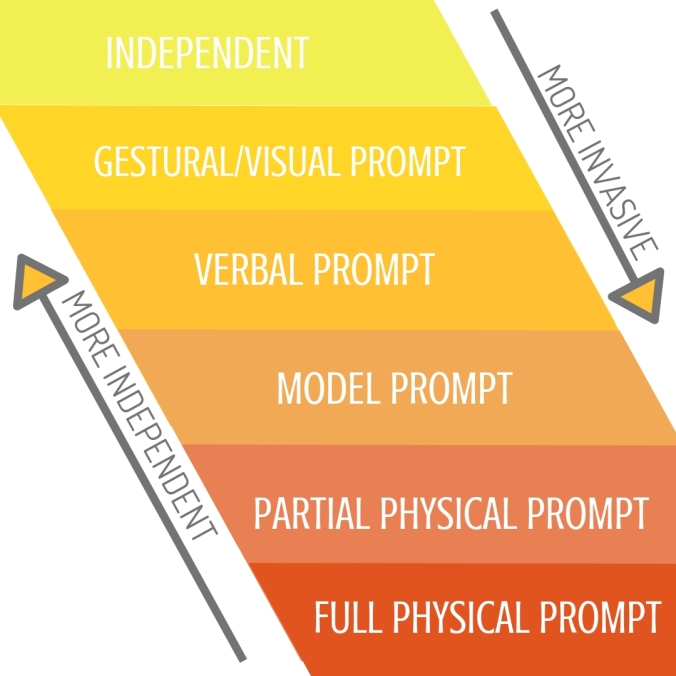Does your child need prompts to complete a task/activity? Most students need some sort of prompt to get going. Prompts are useful tools that we use to help our children complete various tasks. It is also a tool to help increase the chances that the child will correctly complete the task. Prompts shouldn’t be viewed as bad. They are great tools, but you ultimately want to fade those prompts away until a child no longer needs the prompts.
When you break down your day, you are probably using various prompts all throughout the day in an abundance of activities, but not all prompts are created equally. There are a wide variety of prompts and some are more invasive than others. We ultimately want to work towards increasing independence in our students. To do that we need to closely analyze what our prompts look like to make sure we strive to use less and less invasive prompts.

The basic types of prompts include:
- FULL PHYSICAL PROMPT: This can include hand over hand assistance to complete a task. It is a prompt where you are physically moving a child’s body to assist in completion of the task. Example: moving a child’s hand to manipulate scissors safely in a cutting activity.
- PARTIAL PHYSICAL PROMPT: This type of prompting still involves physical assistance, but not to the same degree of a full physical prompt. It can include some physical support under a child’s elbow or arm. Example: guiding a child’s hand towards a paper to initiate cutting.
- MODEL PROMPT: This is showing the student what is expected. Think of it as a Monkey See, Monkey Do. Example: You want the student to jump, so you jump.
- VERBAL PROMPT: Verbal prompts can be broken down into a scale themselves, as verbal prompts include a wide assortment of assistance. This is verbally providing information to help the student complete the task. Example: Verbal prompts can be as simple as saying “wait” to more complex “what do we need to do?”.
- GESTURAL/VISUAL PROMPT: These prompts include simply pointing to something or showing some sort of picture or text. This gives the student some basic information about what they need to do or how to respond, but doesn’t give them the answer. Example: Pointing to a picture of the gym when it is time to line up for PE.
Remember prompts are useful tools, but we need to work towards fading those prompts back. We want to use them to help children understand how to respond and complete the task. As children gain confidence and experience, we need to look at how to make them more and more independent!
To download the PDF version, please click Prompting Hierarchy.